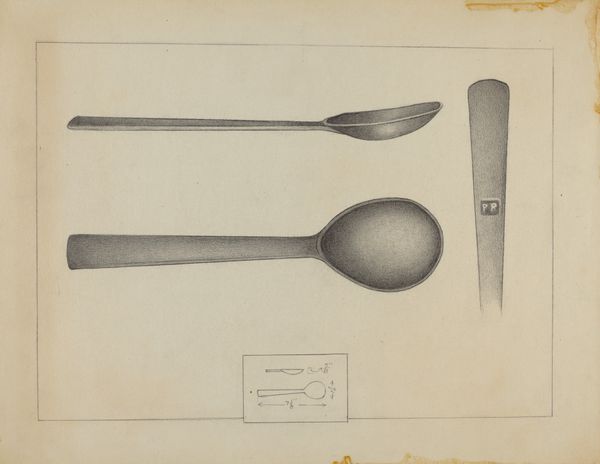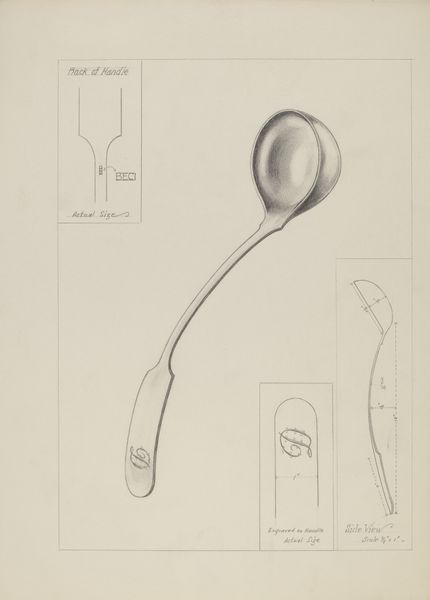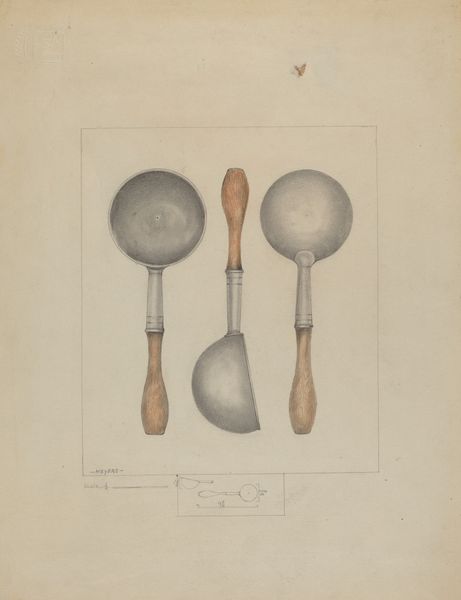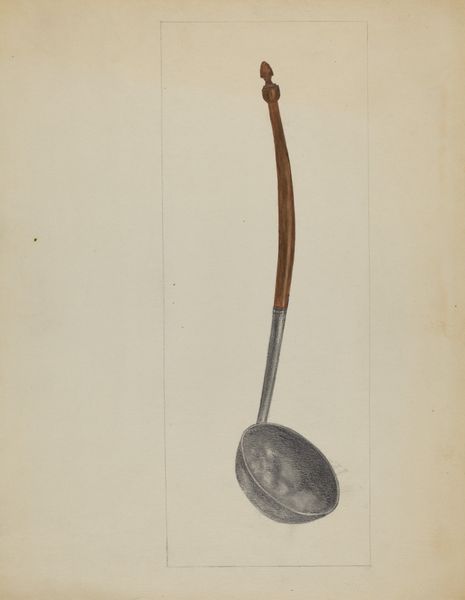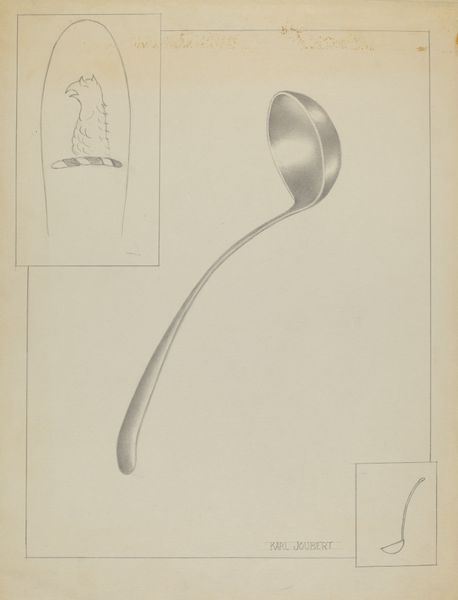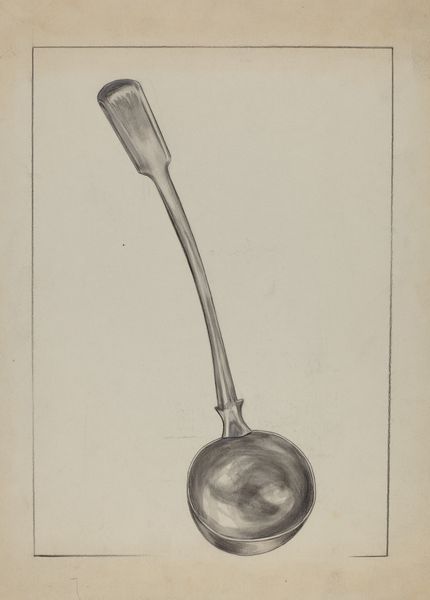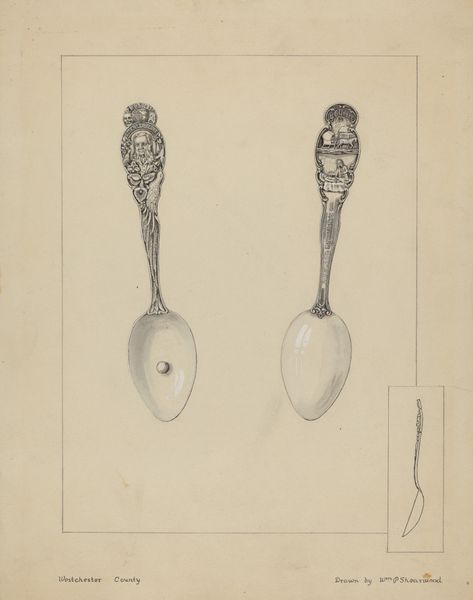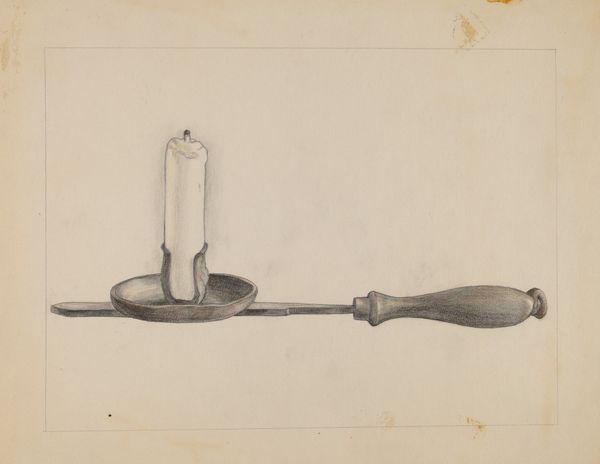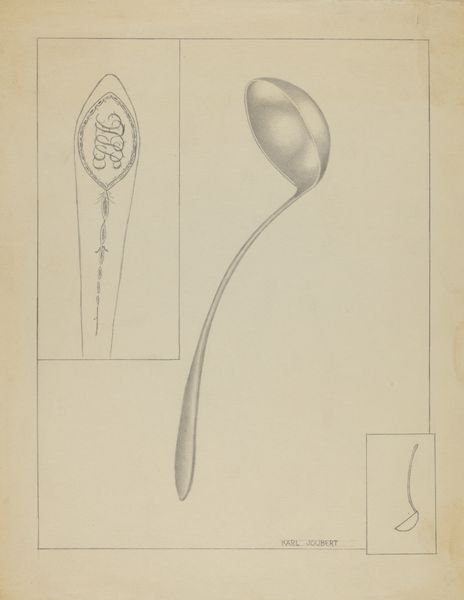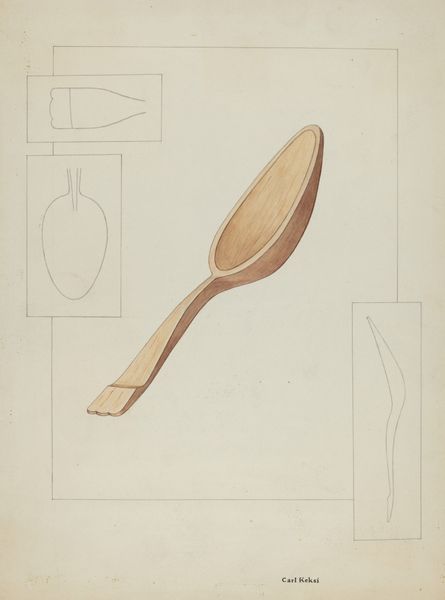
drawing, graphite
#
drawing
#
graphite
#
academic-art
#
realism
Dimensions: overall: 30.4 x 22.9 cm (11 15/16 x 9 in.)
Copyright: National Gallery of Art: CC0 1.0
Curator: What a fascinating study in material culture. This is a graphite drawing entitled "Silver Gravy Ladle," created by Eugene Barrell sometime between 1935 and 1942. Editor: My immediate thought is domesticity and function, and almost a clinical assessment in its visual presentation. It feels detached, despite the familiarity of the object. Curator: Indeed. The artist meticulously captures the texture and form of the silver, and elevates a mundane object to a subject worthy of artistic scrutiny. What do you think Barrell intended to communicate about domesticity, or maybe about the social context in which a silver gravy ladle held significance? Editor: Considering the date, it could reflect a desire for stability during the Depression, when silver objects represented luxury. The ladle embodies the aspirations of middle class. I am interested in knowing where the metal originated, its cost, the work required to produce the object, and if the piece references the coloniality of metals that enriched the elites? Curator: A sharp intersectional observation about access and colonialism and how class is shaped by such elements. We can consider the ladle in terms of consumption— who had access to silverware, and in turn who didn't. Did its possessors benefit from a culture of global material exploitation? Editor: Precisely. Silver wasn’t equally accessible; to some, it represents generations of refinement, for others extraction and labour. The craft of representing it highlights an aesthetic elevation. Curator: Do you see any subversion here, an undermining of traditional roles? Is Barrell offering any insights into changing social roles, or is this simply an ode to form and function? Editor: Perhaps this academic realism acts to both affirm and quietly question these material assumptions, reminding us that even in art, materiality, class, and privilege intersect, are drawn, and consumed by audiences past and present. Curator: That is wonderfully stated. Thank you for the insights that really allow us to see how an everyday utensil may reveal an elaborate history and culture when looked at from multiple vantage points.
Comments
No comments
Be the first to comment and join the conversation on the ultimate creative platform.

